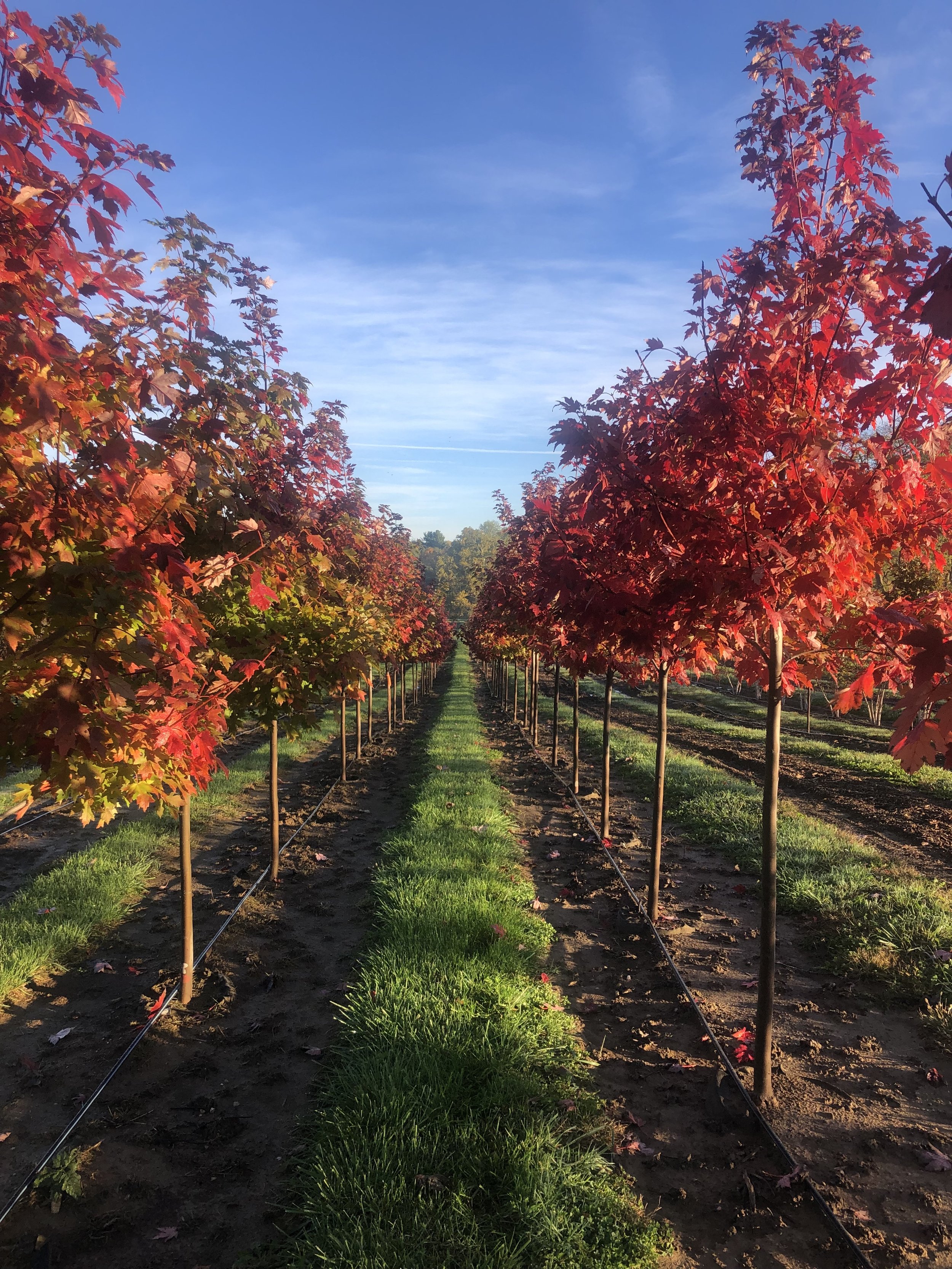
Pruning, planting, delivery, tree brokerage
Availability & Services
Restoration Nursery seeks to provide quality grown landscape trees for its retail and wholesale customers. We offer a growing selection of shade, flowering, and ornamental trees. Our trees are grown in a 'Root Pouch', system, in-ground, in the native soil. If you are in the Horticultural industry, please ask for our wholesale price list.
“We buy our trees from Restoration Nursery because we want to support the mission in hopes it might help the efforts of healing. The customer service from Matt and the team is unmatched.”

Wholesale Customers
WARRANTY
Limited Guarantee:
Plants are warranted to be true to name. Plant material is inspected by the Indiana Department of Natural Resources and certified to be apparently free of dangerous insects and dangerously contagious plant diseases. We warranty our plants to be healthy at time of pickup or shipment. All other warranties are specifically excluded. Any concerns about plant health or quality should be immediately reported.
Delivery Fees (estimated):
1-25 Miles: $50, 26-50 Miles: $75, 51-75 Miles: $100, 76-100 Miles: $125
Longer distances by agreement.
Terms:
Payment at time of pick up or delivery unless other arrangements have been made.
“I love knowing that our tree investment is going for a worthy cause. ”

FAQ
-
The United States Department of Agriculture (USDA) defines a native plant as: “A plant that is a part of the balance of nature that has developed over hundreds or thousands of years in a particular region or ecosystem. Note: The word native should always be used with a geographic qualifier (that is, native to New England [for example]). Only plants found in this country before European settlement are considered to be native to the United States.”
In other words, a plant that developed its strategies in this environment alongside others. And yes, we do grow native trees.
-
A transplant is a stressful time for a tree. The key is to give it the proper amount of water. Too much or too little can be lethal and this value fluctuates with the time of year, weather, and even species. If the tree is planted in hot weather it could need as much as 5 gallons of water every 3 days or so. In cooler weather, you may be able to get by with somewhere near the same amount as little as once a week. Outside of watering, be sure to watch for health or stress indicators. Most of the time this will be most apparent on the leaves with either discoloration or misshapenness.
-
There are 2 ideal windows for planting trees, late fall or early spring, but they certainly aren’t the only times you can do so successfully. The key to planting a tree is what will happen with the roots. If they are exposed to extreme temperatures, hot or cold, or don’t have access to enough water, the tree is not likely to do well. In early spring the trees have just begun the process of “waking up” at this point the ground is thawed, the temperatures are somewhat mild, and the tree has not yet heavily invested resources into growth. In late fall the picture is much the same, the ground is not yet frozen and the tree is just entering dormancy.
-
At Restoration Nursery, we grow and transport nearly all of our trees in grow bags. Grow bags are essentially a fabric sleeve that we plant trees in while they grow at Restoration. There are many advantages to grow bags, especially in nursery work. It makes the trees easier to move when the time comes for a transplant by being in a bag. However, it also makes the moving a little less strenuous on the plant as it will retain as much as 80% of its root structure since very little of the root ball will be damaged or removed with the bag.
-
We believe that as we help men deal with life-dominating issues a good work ethic is critical to improving the quality of their lives. Additionally, we want Restoration to be financially self-sustaining. With these two targets in mind, having the residents generate revenue for the continuation of the program with work simply makes sense. This mentality coupled with the themes of growth and new life makes something like a tree nursery not only a functional decision but a thematically appropriate one.